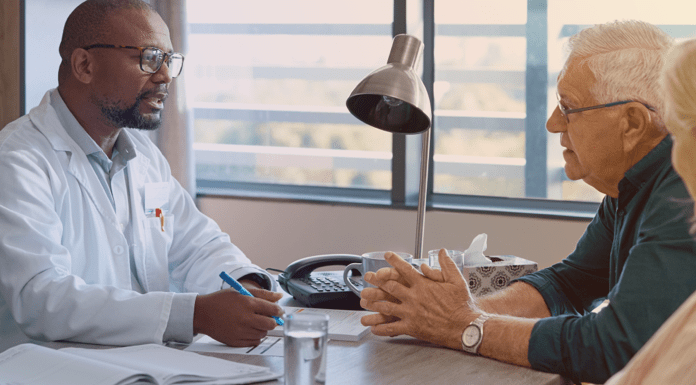A biosimilar is not Interchangeable
unless the FDA says so.1
Find out what INTERCHANGEABILITY can mean for you.

A distinct FDA designation

Interchangeable biosimilar
- Meets the high FDA standards of a biosimilar, plus additional requirements, generally including one or more Interchangeability studies.1 An Interchangeable biosimilar must show that there is no additional risk or reduced efficacy when a patient is switched back and forth multiple times between the reference product and the biosimilar, compared to remaining on the reference product.1
- You can expect the same clinical result as the reference product in any given patient.1
- An Interchangeable biosimilar may be auto-substituted for the reference product by a pharmacist.2 Individual state laws control how and whether providers must be notified.3
- The first Interchangeable biosimilar was approved by the FDA in July 2021.*
*Semglee® (insulin glargine injection) is a registered trademark of Mylan Pharmaceuticals Inc., a Viatris Company.
Interchangeable biosimilars also include all the benefits of biosimilars

Biosimilar
- Proven through a rigorous FDA approval pathway to be highly similar to the reference product.2
- You can expect no clinically meaningful differences in safety, potency, and purity with a biosimilar vs the reference product.2
- Biosimilars were established by the FDA to provide more treatment options, increase patient access, and lower healthcare costs.1
You can expect the same clinical result as the reference product in any given patient.

Reference product
- Also known as an “originator product.”
- Complex, large-molecule biologic medicines that are used to treat a wide range of diseases from psoriasis to a range of cancers.2

How is an Interchangeability study conducted?
Sample study design4,5

An Interchangeability study: Step by step4,5
- 1. After a 14-week “Run-in” period, where all patients are given the reference product, patients are randomized to the treatment group or the control group for a 16-week double-blind period
-
- The treatment group is switched to the Interchangeable biosimilar candidate
- The control group remains on the reference product
- 2. After 4 weeks, the treatment group is switched back to the reference product
- 3. After another 4 weeks, the treatment group is switched back to the Interchangeable biosimilar candidate
- 4. The control group remains on the reference product for 16 weeks
What does an Interchangeability study show?
Patients in the treatment group are compared to the control group to ensure there is no significant difference in4:
- Pharmacokinetics (PK)
- Efficacy
- Safety
- Adverse events
Frequently Asked Questions
No, they’re not. All biosimilars can be used in place of their respective reference product, but only an Interchangeable biosimilar has demonstrated to the FDA that the biosimilar could be auto-substituted at the pharmacy level.2 How and whether providers must be notified varies on a state-by-state basis.3
Prescribers and patients can expect that the Interchangeable product will have the same clinical result as the reference product, and they can be assured that an FDA-approved Interchangeable product has been thoroughly tested and has met the FDA’s high standards for designation.2 Interchangeable biosimilars are expected to improve access to biological products by potentially lowering healthcare costs.1
One or more Interchangeability studies are generally required by the FDA for a biosimilar to achieve an Interchangeable designation. They are designed to show that there is no increased risk of safety or loss of efficacy when patients are switched back and forth multiple times from the reference product to the Interchangeable biosimilar.2
Providers, patients, and insurance companies can use the additional clinical data as evidence that there is no greater risk in terms of safety or diminished efficacy when patients are switched between the reference product and biosimilar.6
The safety and efficacy of a reference product is established through years of clinical and real-world experience. Thus, the FDA has determined that it is necessary to demonstrate that the biosimilar is highly similar structurally, with no clinically meaningful differences in safety, potency, and purity vs its respective reference product. Interchangeable biosimilars also go one step further by performing one or more Interchangeability studies.1
References:
-
1. US Food & Drug Administration website. Biosimilar product regulatory review and approval. https://www.fda.gov/files/drugs/published/Biosimilar-Product-Regulatory-Review-and-Approval.pdf. Accessed November 24, 2020.
-
2. US Food & Drug Administration website. Biological product definitions. https://www.fda.gov/files/drugs/published/Biological-Product-Definitions.pdf. Accessed November 24, 2020.
-
3. Cauchi R. National Conference of State Legislatures website. State laws and legislation related to biologic medications and substitution of biosimilars. May 3, 2019. https://www.ncsl.org/research/health/state-laws-and-legislation-related-to-biologic-medications-and-substitution-of-biosimilars.aspx. Accessed December 1, 2020.
-
4. US Food & Drug Administration website. Considerations in demonstrating interchangeability with a reference product: guidance for industry. http://www.fda.gov/media/124907/download. Accessed December 1, 2020
-
5. Data on file. Ridgefield, CT. Boehringer Ingelheim Pharmaceuticals, Inc.
-
6. US Food & Drug Administration website. Prescribing interchangeable products. https://www.fda.gov/files/drugs/published/Prescribing-Interchangeable-Products.pdf. Accessed December 1, 2020.

